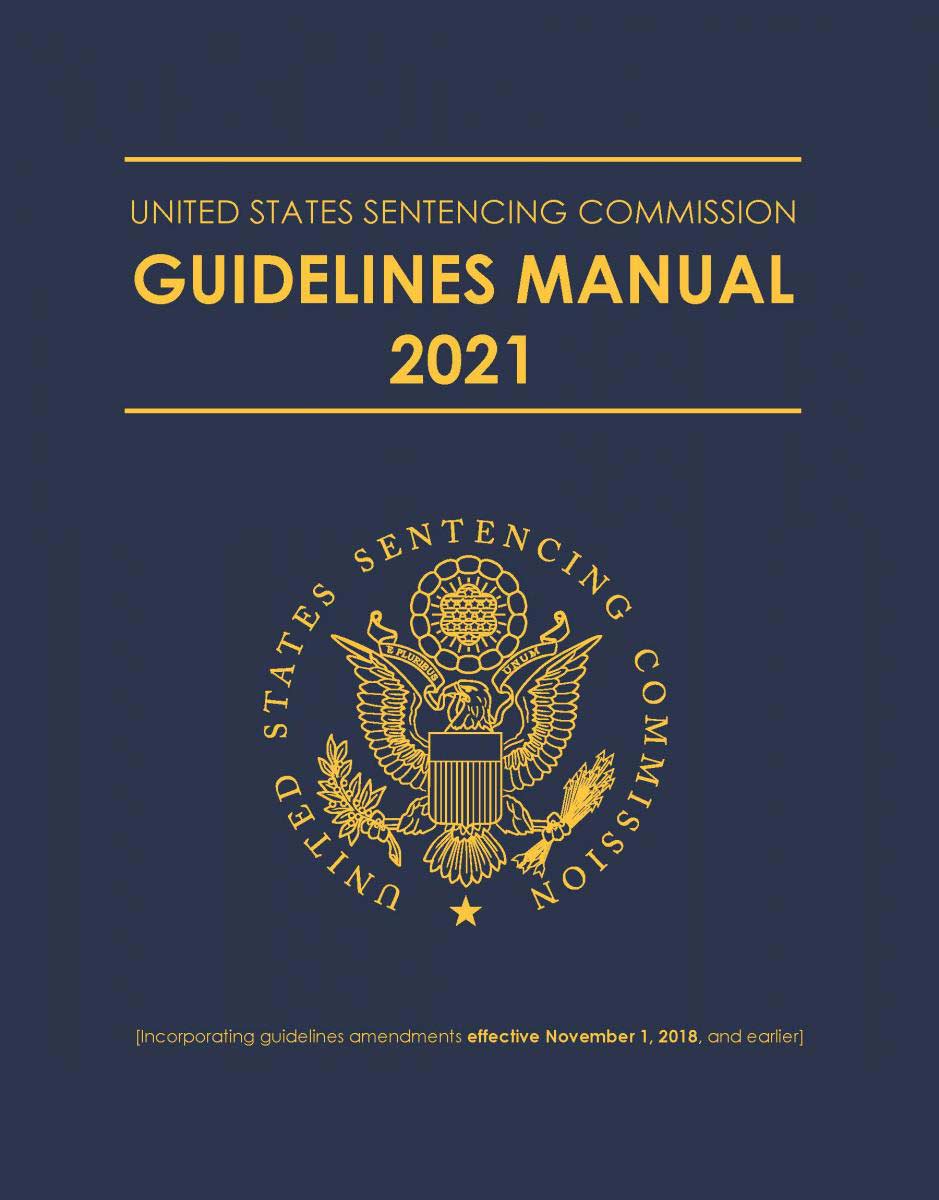The Evolution of Federal Sentencing Practice During the Era of the Sentencing Guidelines
The Early Years of the Federal Sentencing Guidelines
The federal sentencing guidelines were enacted in response to growing concerns over unjustifiable sentencing disparities created by federal judges empowered to apply their own individual notions of justice and the purpose and meaning of statutory sentencing goals.
The passage of the Sentencing Reform Act of 1984 (SRA) created a fundamentally different sentencing system from the prior one. The legislation placed the federal sentencing guidelines squarely at the center of that new system. The ultimate goal of implementing the guidelines was to provide certainty and fairness in achieving sentencing goals while also avoiding unwarranted sentencing disparities among defendants with similar records and found guilty of similar criminal conduct.
The first Guidelines Manual became effective on November 1, 1987. The manual contained a detailed set of mandatory sentencing guidelines binding on all federal judges. It also contained numerous policy statements on an array of sentencing factors and issues to further guide judges in fashioning fair and consistent sentences. The manual also contained a single-page sentencing table laying out sentencing ranges that were substantially narrower than the statutory sentencing ranges that federal judges were accustomed to when deciding a sentence.
Adjusting to a New Federal Sentencing System
The SRA and federal sentencing guidelines constituted radical reform. It significantly reigned in a laissez-faire type of sentencing system that was allowed to operate for decades until its inequities could no longer be ignored. It’s important to note that the guidelines were not implemented with the goal of reducing federal sentences but rather to decrease unwarranted sentencing disparities.
To achieve sentencing consistency and reduce unwarranted sentencing disparities, some sentences necessarily would need to increase while others were lowered. For example, sentences for serious white collar offenses and violent offenses saw some of the most significant increases under the federal sentencing guidelines. Conversely, in cases where aggravating conduct was absent from the offense, the guidelines allowed for lower sentences relative to other similarly charged cases (i.e., a bank robbery where no weapon was used).
The mandatory nature of the federal sentencing guidelines forced all federal judges and practitioners to adjust to them if not entirely accept them. The defense bar was significantly more opposed to the guidelines than federal prosecutors due to the guidelines focus on punishing offense conduct while largely excluding mitigating offender characteristics from the sentence calculation.
Federal judges reacted to the federal sentencing guidelines in more varied ways. Most younger judges not only accepted the guidelines but found them helpful with what most judges say is the most difficult part of their job. Not surprisingly, however, many older judges who for years enjoyed enormous sentencing discretion were less willing to embrace the constraints of the guidelines. In my own practice, I amusingly recall one such judge who routinely referred to the guidelines in open court as the “so-called guidelines.” Nonetheless, over time, the vast majority federal judges sought to apply the guidelines in good faith and consistent with the law.
For years the federal sentencing guidelines largely achieved what they set out to do – reduce sentencing disparities in federal criminal cases. However, like all major reform measures there were tradeoffs and unforeseen consequences. For the guidelines, they increasingly became viewed as overly rigid and punitive. This view was held not only by defense attorneys and defendants, but also by a growing number of federal judges and even some prosecutors.
The growing concerns with the federal sentencing guidelines largely stemmed from sentencing enhancements being applied for increasingly common and repetitive offense conduct (i.e., use of a computer to commit child pornography), guideline amendments that increased sentences for conduct that was not based on empirical data but instituted by Congressional directive (i.e., career offender enhancement), and that downward departures under the guidelines for offender characteristics were either prohibited or discouraged (i.e., lack of youthful guidance, family circumstances, employment and education history).
The Federal Sentencing Guidelines Come Under Judicial Scrutiny
After nearly two decades in operation, there clearly was growing dissatisfaction with the federal sentencing guidelines from a large number of stakeholders in the federal sentencing system. The growing discontent for the guidelines naturally resulted in a substantial increase in litigation challenging the constitutionality of the guidelines. Ultimately, one of these challenges made it before the U.S. Supreme Court.
In 2005, in the case U.S. v. Booker, the United States Supreme Court rendered the federal sentencing guidelines no longer mandatory but “advisory” only. The Court reasoned that the guidelines could result in a sentence based on facts not proven beyond a reasonable doubt to a jury, in violation of the Sixth Amendment. Many viewed the Booker decision as a fatal blow to the guidelines and predicted the return of sentencing disparities similar to those that existed prior to the guidelines.
Predictions of the demise of the federal sentencing guidelines proved to be premature. A seemingly innocuous passage in the Booker opinion required that federal judges must still “consider” the now advisory guidelines when determining an appropriate sentence. While Booker did not explain how the guidelines must be considered, the progeny of cases that soon followed Booker provided clear guidance that also reiterated the central role of the guidelines that many thought Booker had eviscerated. Specifically, federal judges were required to begin each sentencing hearing by accurately calculating the guidelines in the same manner as they had when the guidelines were mandatory. Further, judges were required to use the properly-calculated guideline range as the “starting point” for their sentencing analysis. Finally, any deviation or “variance” from the guideline range had to be explained in sufficient detail on the record, and the more significant the variance the more compelling the justification must be.
The United States Supreme Court also permitted federal appellate courts to apply a rebuttable “presumption of reasonableness” to sentences imposed within the applicable guidelines range. In doing so, the Supreme Court reasoned that since both the sentencing judge and the Sentencing Commission reached the same conclusion as to the propriety of a sentence within the applicable guideline range, that conclusion is entitled to deference on appeal.
The Post-Booker Era of Federal Sentencing Practice
While Booker returned sentencing discretion back to federal judges, that discretion was closely tethered to the constraints of the guidelines and its narrow set of sentencing options. Over the ensuing years, this hybrid sentencing system of constrained discretion proved surprisingly effective in producing more individualized and just sentences while largely avoiding unwarranted sentencing disparities.
The federal sentencing guidelines continue to exert significant influence in the current federal sentencing environment – particularly in assessing the seriousness of the offense. However, sentences imposed below the guideline range have steadily increased based on factors that were previously prohibited or discouraged under the mandatory guidelines.
In fiscal year 2020, a below-guideline sentence was imposed in more than one out of every four cases. The reasons given for the downward variances overwhelmingly pertain to the personal characteristics of the defendant. These include, in descending order of prevalence, personal history, overstatement of criminal history, family circumstances, age, drug dependence, extraordinary acceptance of responsibility, employment record, mental health conditions, lack of youthful guidance, post-offense rehabilitation, physical condition, community ties, and aberrant behavior.
As alluded to earlier, there is another important factor that has assisted the federal sentencing guidelines in maintaining their prominence. That is, as more senior judges retire, they are being replaced by younger judges who have known only the guidelines and are largely content with imposing a guideline sentence unless persuaded to do otherwise.
Conclusion
Over many decades, the federal sentencing system has evolved from an era of unfettered judicial discretion, to mandatory sentencing guidelines, and currently to a system where discretion has been returned to judges but with guardrails provided by the federal sentencing guidelines and transparency requirements for granting variances. If history has taught us anything, it’s that there is no perfect sentencing system. While the current system more effectively addresses the many competing interests of defendants, prosecutors, and judges, the burden remains on federal criminal defense attorneys to be vigilant and have expert knowledge of the guidelines, have a clear sense of which guideline provisions are applicable and under what circumstances, and how best to present mitigating issues and variance arguments to the court.

